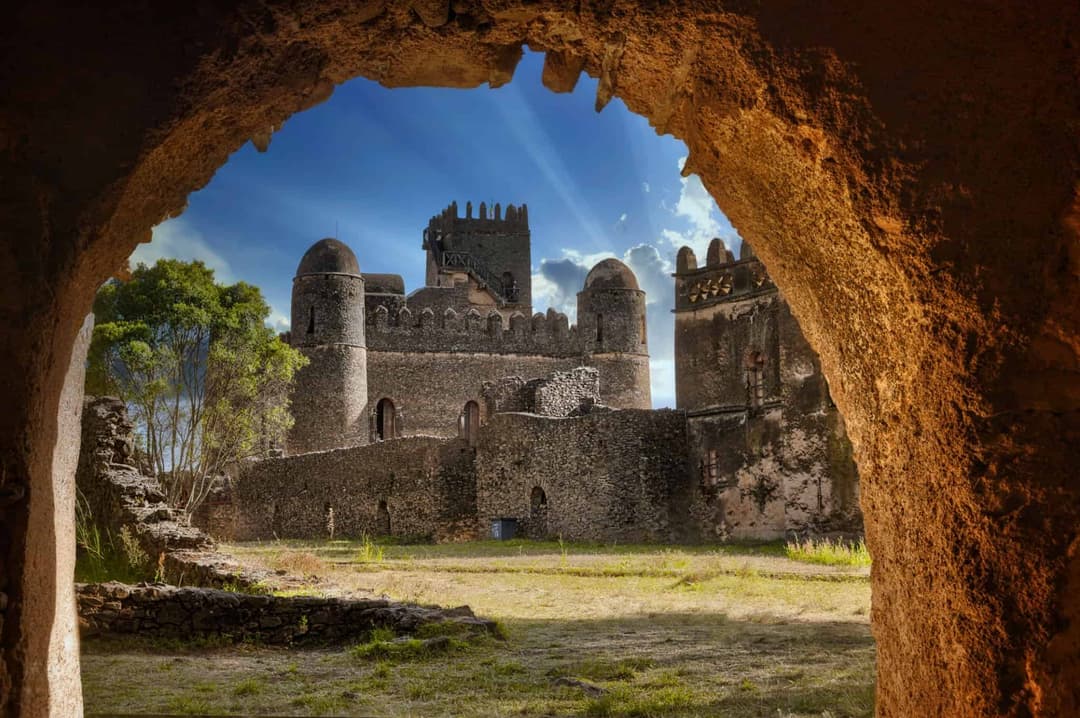Massive Rift Valley lakes teeming with a mesmerizing array of birdlife.

Introducing Wings Of Ethiopia
A Mega Birding Adventure
Commence an adventure on an extraordinary journey through the diverse landscapes of Ethiopia, where nature unveils its majestic wonders and avian treasures. "Wings of Ethiopia: A Mega Birding Adventure" invites you to explore this captivating country's rich biodiversity and unique birdlife. Over the course of 22 days, you'll traverse breathtaking landscapes, from the Great Rift Valley to the Harenna Forest, the Bale Mountain National Park to the vast savannas of the Yabello area.
Along the way, encounter over 460 bird species, including numerous endemics and rarities. From the elusive Stresemann's Bushcrow to the vibrant White-tailed Swallow, every day will be filled with awe-inspiring sightings and unforgettable moments. Immerse yourself in the magic of Ethiopia's natural heritage and let your spirit take flight in this extraordinary birding paradise.
Destination Highlights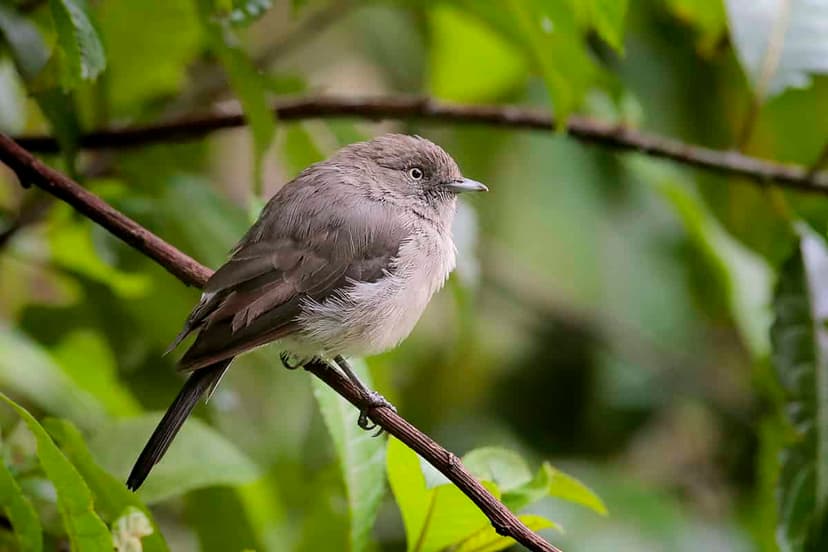

Highlighted Destinations
Moss-draped montane forests boast an impressive selection of endemic species.
The critically endangered Ethiopian Wolf residing in the high Bale Mountains.
The remarkable Jemma Valley and Awash National Park, home to six species of bustard.
Seek out elusive treasures such as the Spot-breasted Lapwing, Blue-winged Goose, and Rouget's Rail.
Discover the enchanting Ankober Serin, Salvadori's Seedeater, and the striking Red-billed Pytilia.
Encounter the vibrant Yellow-fronted Parrot, the charming White-backed Black Tit, and the elusive Abyssinian Woodpecker.
Venture into remote corners of Ethiopia to find sought-after endemics like Ruspoli's Turaco and Stresemann's Bushcrow.
Explore the drier habitats of southern Ethiopia, home to unique species like the White-tailed Swallow and Archer's Lark.
Visit off-the-beaten-track sites, including Mega and Kafka-Shiraro National Park, where the Masked Lark and Sudan Golden Sparrow await.
Itinerary at a Glance
Day by day Tour Itinerary

DAY 1: ARRIVAL IN ADDIS ABABA
- Today is essentially an arrival day. For those who arrive during the day, it is possible to enjoy some birding within city parks. Noteworthy species that may be seen this include White-backed Black Tit, Abyssinian Slaty Flycatcher, Brown-rumped Seedeater, Tekezze Sunbird, White-collared Pigeon, Wattled Ibis, and a host of raptors overhead, numbering both Egyptian and Hooded Vultures. Overnight in Addis Ababa.

DAY 2: ADDIS ABABA TO LAKE LANGANO
- Your Ethiopian adventure commences with an early departure from Addis Ababa this morning, as you head south into the Great Rift Valley. Your first birding stop is at Lake Chelekcheka, an excellent site for migrant ducks and waders. Regular species encountered here include Northern Pintail, Northern Shoveler, Garganey, Eurasian Teal, Tufted Duck, Black-tailed Godwit, and Temminck's Stint.
- Sorting through the rafts of ducks and other migrants can be very challenging due to the distraction caused by the sheer number of species moving through the scrubby vegetation near the lake edge! Common cranes often roost in staggering numbers on the far side of the water, and you may see them flying off to forage in huge, noisy flocks.
- The youll-wooded rim of the deep Lake Hora will be your second stop. The woodlands around the lake also teem with birds, and again it may prove difficult to keep up with the seemingly endless flow of lifers! Blue-breasted Bee-eater, Black-billed Barbet, Common Redstart, Eurasian Blackcap, Red-throated Wryneck, Dark-capped Yellow Warbler, Rüppell's Robin-Chat, Western Black-headed Batis, Beautiful Sunbird, Rüppell's Youaver, and a diverse variety of waterbirds, especially deep water diving ducks, can be seen here.
- Thereafter, the steep-sided Lake Bishoftu offers superb birding. Maccoa and Ferruginous Ducks, Southern Pochard, Singing Cisticola, gorgeous Tekezze Sunbird, Mocking Cliff Chat, Abyssinian Wheatear, Little Rock Thrush, and flocks of Black-winged Lovebird are just some of our targets here!
- Further, en route to Lake Langano, you will then visit Koka Dam and Lake Ziway, both classified as Important Bird Areas, supporting vast numbers of both resident and migrant water birds. Species you will search for include the spectacular Black Crowned Crane, Pink-backed Pelican, African Darter, Intermediate Egret, Goliath Heron, Hamerkop, Yellow-billed and Saddle-billed Storks, Spur-winged and Egyptian Geese, Knob-billed Duck, elegant African Pygmy Goose, African Fish Eagle, Western Marsh Harrier, African and Lesser Jacanas, Common Snipe, Senegal Thick-knee, Sedge Warbler, Spur-winged Lapwing, Gull-billed Tern, and Pied and Malachite Kingfishers.
- Strolling along the lakeshore at Lake Ziway will allow you excellent views of the confiding Great White Pelican and the huge Marabou Stork while dazzling Northern Carmine Bee-eater, migratory White and Western Yellow Wagtails (including some of the striking feldeggi race) and the less colorful Ethiopian Cisticola can be seen around the lake edge. This promises to be an action-packed day, after which you will check into a comfortable lodge overlooking Lake Langano, with views of the 4,000m (13,200ft) Arsi Mountains in the background. Overnight in Langano.

DAY 3: LAKE LANGANO AREA
- Birding in the Langano area is especially good, and you will visit some beautiful fig forest and associated woodlands that teem with birds. Here you will look for Hemprich's and Silvery-cheeked Hornbills, Lemon Dove, Narina Trogon, Lesser and Scaly-throated Honeyguides, Green Malkoha, African Hill Babbler, Double-toothed Barbet, Brown-throated Wattle-eye, Thick-billed Weaver, Crested and Scaly Francolins, endemic Yellow-fronted Parrot, Abyssinian Ground Thrush, Green Twinspot, Red-shouldered Cuckoo-shrike, and Red-headed Weaver. Pods of lazing Common Hippopotamuses are sometimes seen in deeper water, and mammoth Goliath Herons stalk the shallows. You will also visit nearby Lake Abijata, home to thousands of Lesser and Greater Flamingos. Overnight in Langano.

DAY 4: LAKE LANGANO TO HARENNA FOREST
- Leaving the Rift Valley behind, you embark on the lengthy drive to the Harenna Forest in the Bale Mountain National Park. Roadside stops en route could produce several endemics and other species, including White-collared Pigeon, Moorland Chat, Ground scraper Thrush (of the distinctive, endemic race simensis), Blanford's Lark, Blue-winged Goose, and the highly sought-after Spot-breasted Lapwing. At the park headquarters in Dinsho, you may find the colorful Chestnut-naped Francolin, the Abyssinian Owl, the secretive Abyssinian Ground Thrush, the vocal Abyssinian Catbird, and the endemic White-backed Black Tit. Mammals that you may encounter include Mountain Nyala, now entirely restricted to the Bale Mountain massif, Menelik's Bushbuck, and Warthog, unusual at this high altitude.
- Leaving Dinsho on your ascent to the Bale Mountain National Park, you enter a Juniper forest zone, and here you will search for African Goshawk, Rufous-breasted Sparrowhawk, White-cheeked Turaco, the localized Abyssinian Woodpecker, Cinnamon Bracken Warbler, African Hill Babbler, Montane White-eye, and Yellow-bellied Waxbill.
- By the time you reach the Sanetti Plateau, it will probably be fairly late in the day, particularly if you are fortunate enough to find and observe new species such as Moorland Francolin, Wattled Crane, or even the highly sought-after Ethiopian Wolf. The day culminates in our arrival at your accommodation for the next two nights, Bale Mountain Lodge, a boutique forest lodge set within a stunning cloud forest at an elevation of 2,380masl. Overnight in Bale Mountain NP.

DAY 5: BALE MOUNTAIN NATIONAL PARK
- This will be a day of great contrasts and amazing scenery and birding. You will depart early and ascend the Bale Mountain massif onto the Sanette Plateau, which lies between 3,800m and 4,377m (12,540 and 14,444ft) above sea level.
- Upon reaching this unique plateau, you will be driving on Africa's highest road - passing close to the summit of Ethiopia's second-highest mountain. This habitat is termed ‘Afro-alpine moorland' and is characterized by Giant Lobelias that tower like monolithic giants over the rich tussock grasslands and extensive cushions of yellow Everlasting flowers.
- This site is an Important Bird Area of immense significance, supporting seven globally threatened species and nearly all of Ethiopia's highland biome species. The plateau holds the only Afro tropical breeding populations of Ruddy Shelduck, Golden Eagle, and Red-billed Chough. You will also search for Wattled Ibis, Chestnut-naped and Moorland Francolins, Rouget's Rail (particularly common and confiding here), Blue-winged Goose, Spot-breasted Lapwing, African Snipe, Wattled Crane, Thekla's Lark, Abyssinian Longclaw, Red-breasted Wheatear, Moorland Chat, and flocks of endemic Ethiopian Siskins. These grasslands are estimated to support an incredible biomass of 4,000kg (8,800lb) of rodents per hectare.
- This obviously attracts an array of raptors, and you should see Augur and Mountain Buzzards and, if you are lucky, the rare Golden Eagle. They share this abundant food source with the plateau's most celebrated resident, the Ethiopian or Simien Wolf, crowned with the unenviable title of “the world's rarest canid”. Watching these vibrantly colored animals, most closely related to the Grey Wolf, exhibiting their hunting prowess whilst pouncing on Giant Mole Rats (another endemic to the Sanetti Plateau) is surely among Africa's greatest wildlife experiences.
- You should enjoy excellent photographic opportunities in this unique montane habitat.
- This afternoon, you will return to our lodge and enjoy an opportunity to bird a part of the vast Harenna forest, the largest intact forest block in Ethiopia, and the largest protected Afro-alpine forest on the continent.
- It still supports populations of Lion, and the only surviving forest-dwelling African Wild Dogs. Although it's unlikely that you will see either of these species, the descent through this breathtakingly beautiful, moss-draped forest is inspirational. Here you will search for the uncommon Ayres's Hawk Eagle, African Olive Pigeon, Lemon and Tambourine Doves, African Emerald Cuckoo, Abyssinian Woodpecker, Narina Trogon, Brown Parisoma (represented by a subspecies endemic to this National Park), Abyssinian Crimsonwing, African Citril, and Yellow-crowned Canary. Later in the day, you head back to Goba for the night. Overnight in Bale MNP.

DAY 6: HARENNA FOREST TO NEGELE
- You have a long drive ahead of us today and will make a relatively early start to our journey. Leaving Harenna Forest, you will gradually lose altitude en route to Negele, a town in the Guji Zone of the Oromia Region. You will exit the forest zone and enter progressively drier thorn savanna in this remote, southern sector of Ethiopia. Along the dusty drive, you can expect to start adding a number of new species to our burgeoning list, including Red-and-yellow Barbet, Golden-breasted, Shelley's and Superb Starlings, Northern Red-billed and Eastern Yellow-billed Hornbills, and Lilac-breasted Roller.
- Finally, you will reach a dry wadi on the Genale River, home to Ethiopia's most sought-after endemic, Ruspoli's Turaco. The bird is named after an Italian Prince, its hapless discoverer, who was killed by an elephant soon after collecting the type specimen in the 1890s.
- It took another 50 years before explorers saw the turaco again, and only in the 1970s was anything revealed about this bird. You will search for fruiting fig trees along the wadi and should enjoy excellent views of this very unusual and beautiful turaco. You will arrive in Negele in the early evening and check into your basic hotel. Overnight in Negele.

DAY 7: NEGELE AREA
- East of Negele lies a unique open grassland, the Liben Plains, to which the little-known Archer's Lark is restricted. This species belongs to the unusual genus Heteromirafra, which also includes South Africa's Rudd's Lark, and is considered one of the most endangered birds on Earth. You will walk through these plains in search of this special bird, which you hope to watch performing its parachute display flight.
- You should also find small parties of hovering Lesser Kestrel, giant Kori Bustard (the world's heaviest flying bird), White-bellied Bustard, Temminck's Courser, Black-winged Lapwing, the range-restricted Somali Short-toed Lark, Plain-backed Pipit, and Pectoral-patch Cisticola. If you're very lucky, you may see coveys of Coqui Francolin or flush a migratory Corn Crake.
- Further east of Negele, you will bird the increasingly dry woodland and thorn savanna towards the Somali border. This area supports a recently found population of the tricky endemic Salvadori's Seedeater, scarce Golden Pipit, elusive Red-naped Bushshrike, White-winged Black Tit, Pringle's Puffback, Three-streaked Tchagra, Foxy Lark, Somali Crombec, Taita Fiscal, Red-fronted Barbet, garish Golden-breasted Starling, attractive flocks of White-crowned Starlings, Somali Crow, African Silverbill, Shelley's Sparrow, and Somali Bunting. Large troops of Olive Baboon may also be encountered here, and you should see Guenther's Dik-dik and possibly Gerenuk. Overnight in Negele.

DAY 8: NEGELE TO MEGA
- Today's drive along another long and seldom-traveled road takes you near to the Kenya border and finally to the town of Mega. Several birding stops will break the journey, the most notable being a stop at the Dawa River in search of Juba Weaver, White-winged Collared Dove, and Black-bellied Sunbird. Other noteworthy birds you may encounter en route to Mega include Somali Courser, Magpie Starling, Black-throated and D'Arnaud's Barbets, Pygmy Batis, Acacia Tit, Dodson's Bulbul, Red-fronted Warbler, Purple Grenadier, Black-capped Social Weaver, Steel-blue Whydah and its host, Black-cheeked Waxbill.
- This afternoon, you shall drive a short distance from town and search the surrounding rocky hillsides for the rarely seen near-endemic Black-fronted Francolin. Overnight in Mega.

DAY 9: PLAINS OF MEGA SODA
- You spend the day exploring the amazing Mega area, from isolated mountains to impressive lava plains it offers some beautiful scenery. Your key targets will include the nomadic and elusive Masked Lark, splendid Heuglin's Bustard, and Black-fronted Francolin should we not have seen it already.
- Other impressive species seen in the area include Somali Courser, Somali Bee-eater, Donaldson-Smith's Sparrow-Weaver, Short-tailed, Pink-breasted, and Red-winged Larks, and Somali Sparrow. If we are particularly fortunate, we may even find the enigmatic Quail-plover.
- In the evening, we will embark on a night drive in search of Sombre and Star-spotted Nightjars. Overnight in Mega.

DAY 10: MEGA TO YABELLO
- You have most of the day to explore this wonderful area in search of any species we may not have seen as yet. Exciting possibilities include the huge Kori, White-bellied, and Buff-crested Bustards, cryptic Lichtenstein's Sandgrouse, Chestnut-headed Sparrow-Lark, Parrot-billed Sparrow, Magpie Starling, and Tsavo Sunbird.
- You then make a short drive north to Yabello, home to two of Ethiopia's most sought-after endemic birds, both listed as globally threatened: the enigmatic Stresemann's Bushcrow and glistening White-tailed Swallow. This area of Acacia savanna is characterized by giant red termite mounds (some towering 5m above the plains!) and both these birds seem to be associated in some way with these marvels of natural architecture.
- The social Bushcrow (or Zavattariornis) was only discovered in 1938 and its affinities have yet to be established with certainty. Although it appears starling-like, it is presumed to be most closely related to Crows. Overnight in Yabello.

DAY 11: YABELLO AREA
- You have the whole day to bird the Yabello area and get better acquainted with Stresemann's Bushcrow and White-tailed Swallow. Other birds we will be looking for are Gabar Goshawk, the shrike-sized African Pygmy Falcon, Yellow-necked Spurfowl, glamorous flocks of Vulturine Guineafowl, Black-faced Sandgrouse, Mottled Swift, Tree Pipit, the localized Bare-eyed Thrush, ventriloquial Spotted Palm Thrush, African Grey Flycatcher, Pale Prinia, Yellow-bellied Eremomela, Banded Parisoma, Hunter's and Shining Sunbirds, Superb and Wattled Starlings, Chestnut Sparrow, Yellow-spotted Petronia, Grey-capped Social Weaver, Chestnut Weaver, Green-winged Pytilia, White-bellied Canary, and White-winged Widowbird.
- A night drive in this exciting area could produce Donaldson-Smith's and Slender-tailed Nightjars, Greyish Eagle-Owl, Northern White-faced Owl, and Three-banded Courser. Nocturnal mammal sightings have included Striped and Spotted Hyenas, Serval, African Wild Cats, and Ethiopian Genet. Overnight in Yabello.
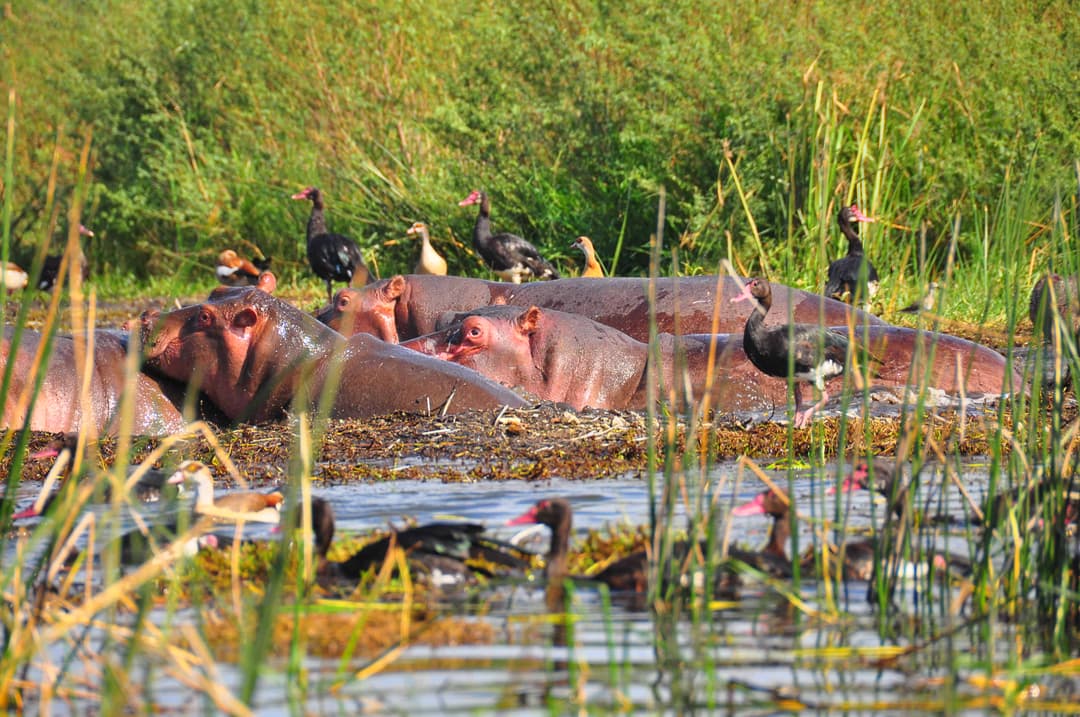
DAY 12: YABELLO TO LAKE HAWASSA
- Following breakfast, you will depart Yabello and make your way back north towards Addis Ababa on what is, essentially, a travel day. In the late afternoon, you will reach our comfortable hotel, on the shores of Lake Hawassa. Overnight in Hawassa.

DAY 13: LAKE HAWASSA TO LAKE ZIWAY, VIA LAKES SHALLA AND ABIJATTA
- Your pre-breakfast birding stroll should yield some special birds around our well-wooded hotel grounds. Amongst our targets you hope to see are African Spotted Creeper, Little weaver, Black-billed Wood Hoopoe, Double-toothed Barbet, Woodland Kingfisher, huge Silvery-cheeked Hornbill, the attractive Red-shouldered Cuckooshrike, western Black-headed Batis, Brown-throated Wattle-eye, Mourning Collared Dove, Grey-backed Fiscal, Northern Puffback, and Bronze Mannikin. Reedbeds in the vicinity support Greater Painted-snipe, Black Crake, African Swamphen, Blue-headed Coucal, Red-faced Cisticola, Lesser Swamp Warbler, and Common Waxbill.
- The hotel grounds also support families of Grivet Monkey, though it is the regal Guereza (Black-and-white Colobus) that will certainly steal your attention as they leap through the trees, their shaggy pelts and long tails trailing behind.
- After breakfast, you may then visit the remarkable Lake Hawassa fish market. This large lake is particularly rich in fish, and the fishermen gut their catch and discard the waste around the market. This, in turn, attracts large numbers of grotesque Marabou Stork and other birds. Photographic opportunities are unrivalled. You should also see Great White Pelican, White-breasted and Reed Cormorants, Hamerkop, African Sacred Ibis, Black-headed, Grey-hooded, and Lesser Black-backed Gulls, and sometimes the massively-equipped Thick-billed Raven squabbling over the fish remains.
- Further north, the three neighboring water bodies of Lakes Shalla, Abijatta, and Langano could not be more different from each other. Having already visited the medium-depth reddish-brown Lake Langano, today you will pay a visit to the other two - the shallow and brackish Abijatta, and the extremely deep, blue Shalla (once a volcanic crater and now home to several bubbling sulfuric hot springs).
- You will spend part of today exploring these lake shores and their surrounding woodlands and forests, where Clapperton's Francolin, Little Rock Thrush, African Thrush, Buff-bellied Warbler, Red-faced Crombec, Beautiful Sunbird, Rüppell's Starling, Red-billed Oxpecker, Red-billed Firefinch, Bare-faced Go-away-bird, Black-winged Lovebird, Abyssinian Wheatear, White-winged Black Tit, Black-billed Wood Hoopoe, African Pygmy Kingfisher, Greyish Eagle-Owl, Northern White-faced Owl, Slender-tailed Nightjar, Bearded Woodpecker, and Masked Shrike occur in dry Acacia woodland throughout the area, while Black-billed, Banded, and Double-toothed Barbets, Eastern Grey Woodpecker, White-rumped Babbler, and Ethiopian Boubou are resident in well-forested areas.
- At Lake Abijatta, in particular, you hope to find flocks of Greater and Lesser Flamingo, Northern Shoveler, Southern Pochard, Cape Teal, Dark Chanting Goshawk, Eastern Imperial and Long-crested Eagles, Grey Kestrel, Little Ringed, Common Ringed, Kittlitz's and occasionally Caspian Plovers, many species of Palaearctic waders, Pallas's and Lesser Black-backed Gulls (amongst several other species of gulls and terns), Collared Pratincole, Little Bee-eater, family groups of the wonderful Abyssinian Ground Hornbill, Sand Martin, and African Pipit. Mammals you may see here include Grant's Gazelle, Oribi, and Spotted Hyena. In the late afternoon, you will check into a hotel near Lake Ziway. Overnight in Ziway.

DAY 14: LAKE ZIWAY TO ADAMA
- For one final occasion, you will spend your morning in the mighty Rift Valley south of Addis, where a second visit to some of the aforementioned lakes will hopefully yield some new species. The remainder of the day will be spent travelling to Adama. Overnight in Adama.

DAY 15: ADAMA AZRETH TO AWASH NATIONAL PARK
- Today you drop down the immense western wall of the Great Rift Valley and travel across the wild Afar tribal territories. You will make a concerted effort to find the very rare and localized Sombre Rock Chat, Striolated Bunting, and Blackstar near Lake Beseka, while you also have a decent chance of seeing Hamadryas Baboon sitting atop the edge of escarpments in large troops, soaking up the early morning sun.
- You will then head to the magnificent Awash National Park where you will bird the Awash River and Kirayawa Gorge, exploring riverine forests, wetlands, Acacia woodlands, savannah grasslands, rocky hills, cliffs, and escarpments. The park boasts a bird list of around 460 species and you will make an effort to find, amongst many others, Egyptian Vulture, Bateleur, Tawny and Greater Spotted Eagles, African Harrier-Hawk, Eastern Chanting Goshawk, Scissor-tailed Kite, Shikra, Helmeted Guineafowl, Common Buttonquail, the nocturnal Three-banded Courser, mega Star-spotted Nightjar, Eastern Plantain-eater, the diminutive Pearl-spotted Owlet, and giant Verreaux's Eagle-Owl, Blue-naped Mousebird, gaudy Purple, Lilac-breasted, and Abyssinian Rollers, Abyssinian Scimitarbill, Eurasian Hoopoe, Eastern Yellow-billed Hornbill, Greater Honeyguide, Wire-tailed Swallow, Red-winged, Gillett's, and Singing Bush Larks, White-browed Scrub Robin, over-wintering Common Rock Thrush, localized Ashy Cisticola, Eastern Olivaceous Warbler, Grey Wren-Warbler, Yellow-bellied Eremomela, Grey-headed Batis, Mouse-colored Penduline Tit, Slate-colored Boubou, Northern White-crowned Shrike, Northern Puffback, Somali Fiscal, Nile Valley and Marico Sunbirds, Grey-headed, Orange-breasted, and Rosy-patched Bushshrikes, Fan-tailed Raven, and Red-billed Quelea.
- In the afternoon, you will settle into our lodge overlooking Awash Falls. Overnight in Awash National NP.

DAYS 16: AWASH NATIONAL PARK
- Today you will spend a full day in this great national park. During our explorations, you will be searching again for the aforementioned species as well as the dazzling Northern Carmine Bee-eater perched atop the backs of striding Kori Bustard, a seldom observed phenomenon. In fact, this is bustard kingdom deluxe and nowhere else on the planet can boast the chance of no less than six bustard species in one day (Kori, Arabian, Buff-crested, White-bellied, Black-bellied, and Hartlaub's)!
- Mammals are also well represented and you may see Aardwolf, Beisa Oryx, Aardvark, Soemmering's Gazelle, elegant Gerenuk (the giraffe-proportioned relative of the widespread Impala), Abyssinian Hare, African Wild Cat, Black-backed Jackal, Spotted and Striped Hyenas, Greater and Lesser Kudus, Warthog, and Salt's Dikdik. Overnight in Awash National NP.

DAY 17: AWASH NATIONAL PARK TO ALEDEGHI WILDLIFE RESERVE
- Today you depart Awash National Park early and head further north to Aledeghi Plains. Here you will search for Somali Ostrich, Martial and Short-toed Snake Eagles, Yellow-necked Spurfowl, the rare Arabian Bustard (perhaps the best location on earth for this species), Black-headed Lapwing, Chestnut-bellied Sandgrouse, and Chestnut-backed Sparrow-Lark. Occasionally highly nomadic species such as Pale Rock Finch or Black-crowned Sparrow-Lark move into the area as well. Depending on conditions, you may also see a number of mammals such as the Golden Jackal, Beisa Oryx, Grevy's Zebra, and Soemmering's Gazelle.
- This land is inhabited by nomadic Afar tribesmen whom you will see dressed in their fine white cotton tunics, bedecked with traditional jewelry, daggers, and spears. The men sport a unique bushy hairstyle, while women and girls are also extravagantly attired and adorned. They adhere strictly to their ancestral ways of tending their camel and goat herds and roaming throughout this inhospitable land.
- As the day begins to heat up, you shall leave the Aledeghi Plains behind and head to our lodge. This increasingly arid landscape is a haven for dry country residents and migrant species. Watercourses and rocky outcrops harbor Eurasian Sparrowhawk, African Collared, and European Turtle Doves, the range-restricted Yellow-breasted Barbet, Chestnut-headed Sparrow-Lark, Common Nightingale, Blue Rock Thrush, Rufous-tailed, and Black Scrub Robins, Boran Cisticola, skulking Upcher's and Menetries's Warblers, groups of Red-fronted Warbler, Ruppell's Starling, Black-crowned Tchagra, Southern Grey Shrike, Red-billed Buffalo weaver, and Chestnut-crowned and White-browed Sparrow-weavers. There is also the option to avail of the numerous hot springs around which the lodge was built. This evening, an optional night walk may reveal Greyish Eagle-Owl or Slender-tailed Nightjar. Overnight in Awash National NP.

DAY 18: ALEDEGHI WILDLIFE RESERVE TO DEBRE BIHRAN VIA MELKA GEBDU & GEMASA GEDEL
- Today you depart your lodge very early for the drive north to Debre Birhan, skirting the majestic Ankober Escarpment for part of the way. Your route takes us through one of the least driven and most picturesque roads in the entire country, although major road improvements in this area are sure to change this. Our first stop of the day will be at the typically hot and dry Melka Gebdu track, where our primary focus will be on finding another scarce endemic, Yellow-throated Seedeater. This area is also excellent for Yellow-breasted Barbet, Bruce's Green Pigeon, Bare-faced Go-away-bird and a number of sunbirds. Red-billed Pytilia, a rare and tricky endemic has also been recorded here.
- After reaching the escarpment, you may make the odd roadside birding stop for Blue-winged Goose, Abyssinian Long claw, Erlanger's Lark, or Thick-billed Raven. This afternoon you shall reach Gemasa Gedel, an excellent site for the localized Ankober Serin, a rare and elusive Ethiopian endemic. Discovered only in 1976, they survive along a few kilometers of this wind-blasted grand escarpment, as do Gelada Baboons, also known as Bleeding heart Baboons. This densely-pelted, shaggy baboon is endemic to Ethiopia, and the males can often be seen flipping back their lips in a show of dominance.
- These animals have the closest vocal repertoire to humans of any mammal, pronouncing all consonants and four vowels! They forage on the grasslands above the escarpment and roost on ledges of inaccessible cliffs at night. Other possible species to be found here include Ethiopian Siskin, Streaky Seedeater, Moorland Chat, White-billed Starling, Bearded Vulture, Verreaux's Eagle, Rufous-breasted Sparrowhawk, Peregrine Falcon, the seldom recorded Somali Starling, and Long-billed Pipit. In the afternoon, you will then retire to our comfortable hotel in Debre Birhan. Overnight in Debre Birhan.

DAY 19: DEBRE BIRHAN TO ADDIS ABABA VIA THE JEMMA VALLEY AND DEPART
- An early departure from Debre Birhan is essential in order to be at your chosen site when the endemic Harwood's Francolin is at its most vocal, thus providing our best opportunity for seeing this elusive species.
- The Jemma River is one of the main tributaries of the Blue Nile and it cuts a 700m (2,300ft) deep gorge through the landscape. The habitat in the gorge is dominated by Acacia woodland, while the steep sides provide habitat for some excellent endemic birds. You will concentrate our search here for Rüppell's Vulture, Verreaux's Eagle, African Hawk-Eagle, Augur Buzzard (dark morph birds are commonly seen here), Lanner and Peregrine Falcons, Erckel's Francolin, Nyanza Swift, Hemprich's Hornbill, Red-rumped Swallow, Abyssinian Wheatear, the endemic and localized Rüppell's Black Chat, endemic White-winged Cliff Chat and its more familiar cousin, Mocking Cliff Chat, endemic White-billed Starling, elusive Yellow-rumped Seedeater, and Cinnamon-breasted Bunting.
- You will have a picnic lunch at the river and bird the surrounding woodlands for Blue-spotted Wood Dove, Klaas's Cuckoo, Black-billed Barbet, Eastern Olivaceous Warbler, Lesser Whitethroat, Foxy and Singing Cisticolas, African Paradise Flycatcher, Masked, Woodchat, and Isabelline Shrikes, Swainson's Sparrow, Bush Petronia, Speckle-fronted weaver, Red-collared Widowbird, Black-winged Red and Yellow Bishops, and both Crimson-rumped and Abyssinian Waxbills. With a good dose of luck, you may stumble upon the quiet and inconspicuous Red-billed Pytilia, one of the trickier endemics that is regularly found in the Jemma Valley. In the mid-afternoon, you will depart for the drive back to Addis Ababa. Overnight in Addis Ababa.

DAY 20: ADDIS ABABA TO HUMERA
- You depart on a domestic flight to Humera. On arrival, we will transfer to our guesthouse and get settled in before venturing out for some afternoon birding. Overnight in Humera.

DAY 21: KAFTA-SHIRARO NATIONAL PARK AND SURROUNDS
- Today you will explore this remote and seldom-visited park and surrounding area. It is situated in the Sahelian zone and thus offers an interesting selection of dry country species. The habitat consists of dry acacia bush veiled in a slightly hilly area and follows the tranquil Tekezze River. You will concentrate your efforts on finding the beautiful Demoiselle Crane which makes a stopover here on its migration from Sudan to India. Up to 3,800 cranes have been seen in this area and the site and sound of them bugling at dusk is a spectacle indeed!
- Other key targets include a Sudan/Ethiopia endemic; White-headed Babbler, the amazing Egyptian Plover (a monotypic family), the impressive Sahel Paradise Whydah, and Sudan Golden Sparrow. Other species of interest that are not generally seen on a standard Ethiopian tour include Vieillot's Barbet, Black-billed Wood Dove, Rose-ringed Parakeet, Green Bee-eater, Red-pate Cisticola, Black-headed Gonolek, Northern Grey-headed Sparrow, Black-rumped Waxbill, Chestnut-bellied Starling, Yellow-billed Oxpecker, White-rumped Seedeater, and Golden-breasted Bunting. If we are fortunate we may find a roosting Long-tailed Nightjar. Other more widespread species we may see include Black Stork, Short-toed Snake Eagle, Booted Eagle, Senegal Thick-knee, Black-headed Lapwing, Lichtenstein's and Four-banded Sandgrouse, European Turtle Dove, Abyssinian Roller, Northern Carmine Bee-eater, Black-billed Wood Hoopoe, Black Scimitarbill, Yellow-breasted Barbet, Masked Shrike, Black and Rufous-tailed Scrub Robin, Black-eared Wheatear, and Crimson-rumped Waxbill. Overnight in Humera.

DAY 22: HUMERA TO ADDIS ABABA AND DEPARTURE
- Depending on the time of our departure flight we may have an opportunity for some final early morning birding. We will then make our way to the airport in order to catch our flight back to the capital Addis Ababa to connect with our International flights home.
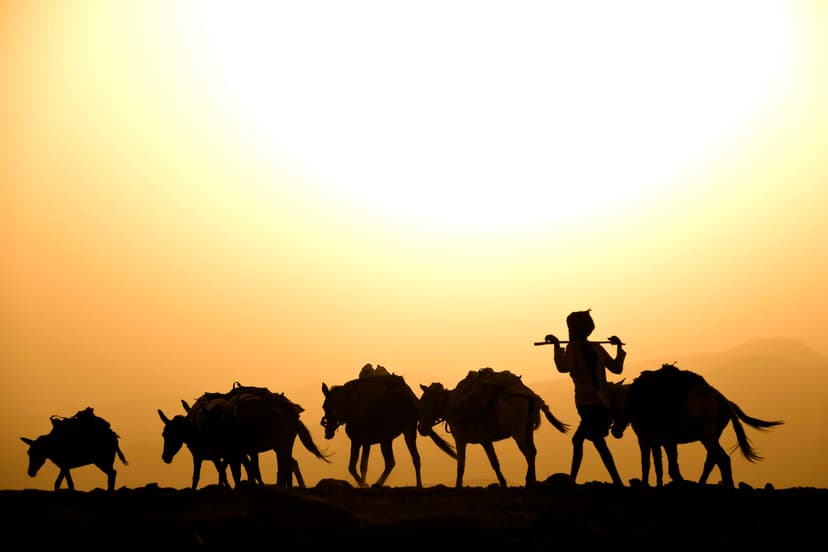
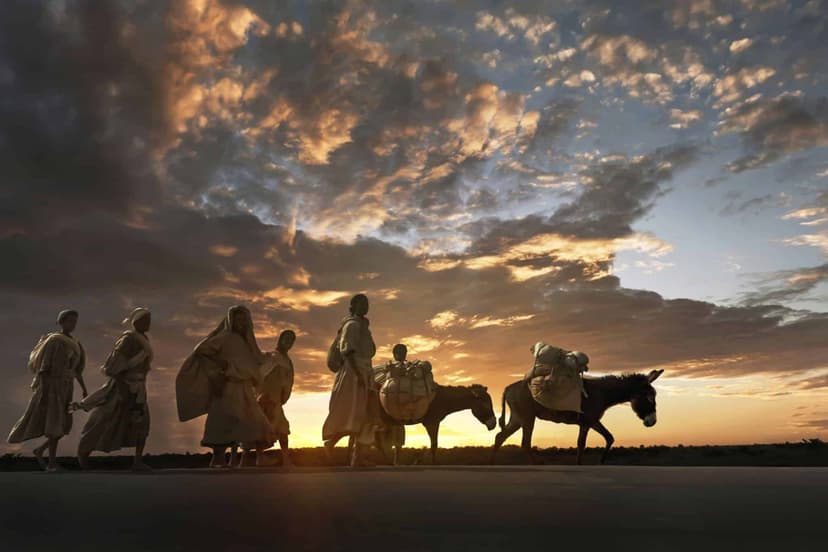
How Can We Help You Create an Extraordinary Ethiopian Adventure?
At Sawla Tours, we are passionate about turning your travel dreams into reality. With years of hands-on experience in crafting unforgettable journeys to Ethiopia, we are your go-to experts in deciding when to travel, where to explore, and what to discover.
Whether you have a detailed itinerary in mind, seek professional advice, or simply don't know where to begin, we're eager to assist. Reach out to us today, and together, we'll create an extraordinary travel experience tailored just for you.
Contact Us Now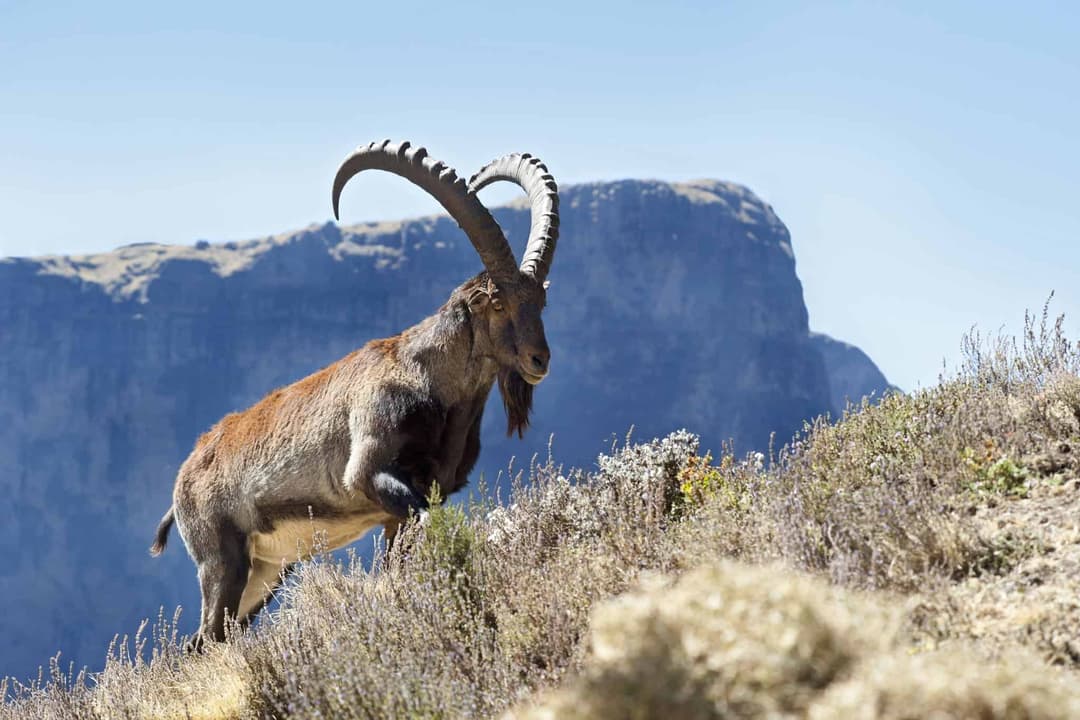
Ethiopia Tour Themes
Discover More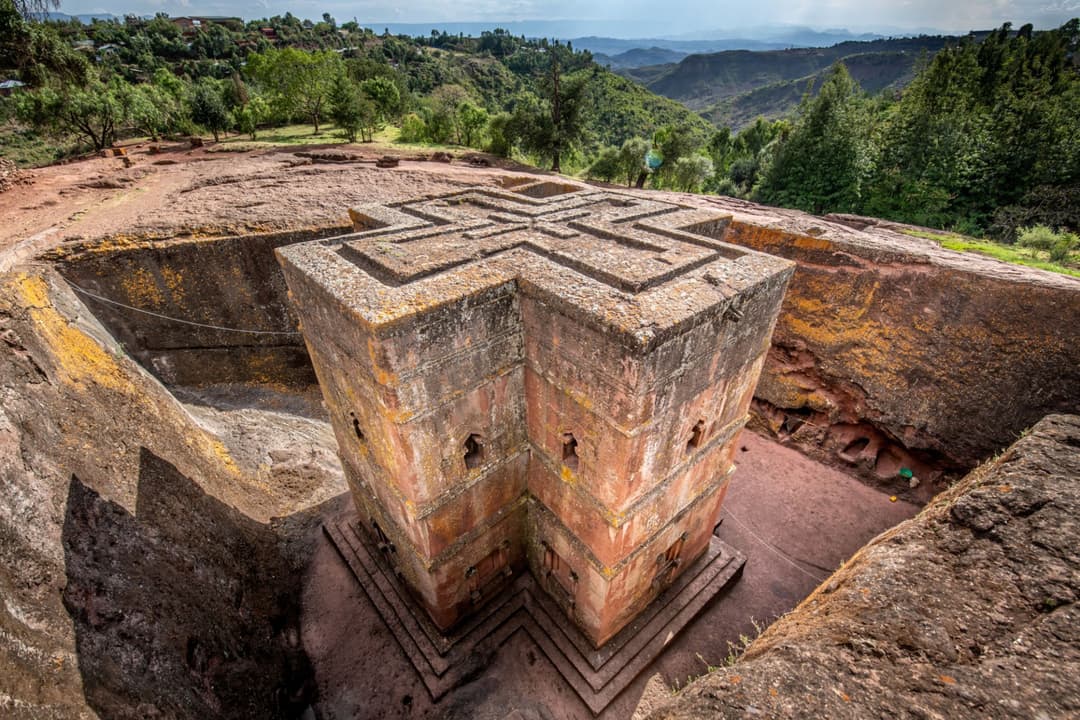
Popular Destinations
Discover More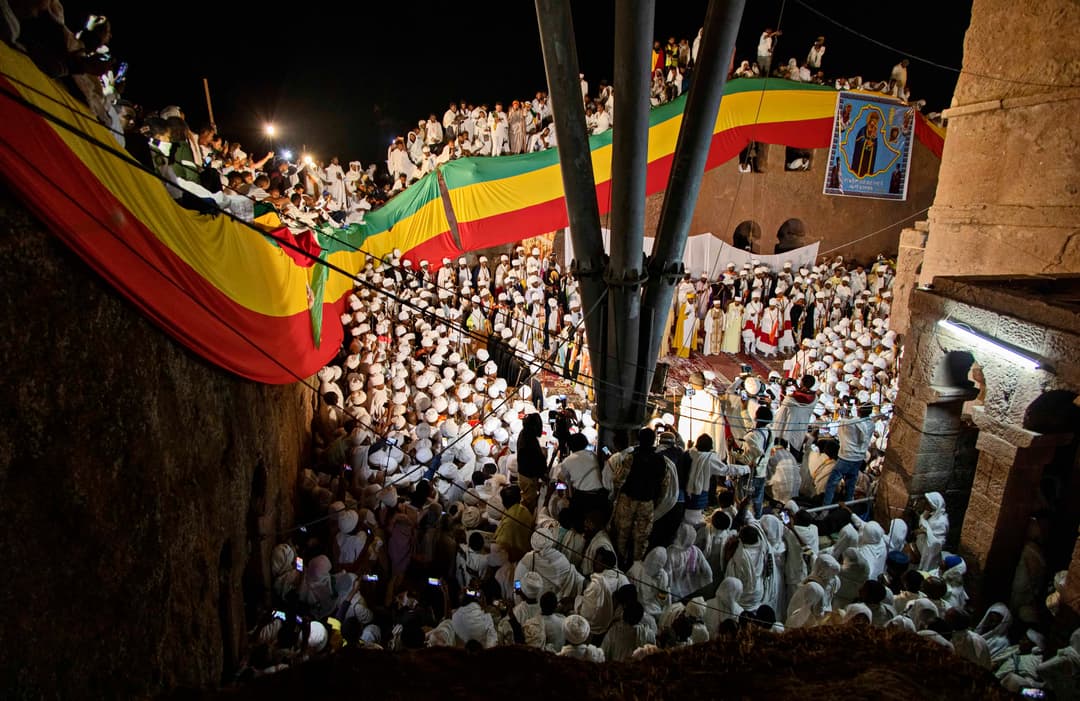
Itineraries By Experience
Discover More